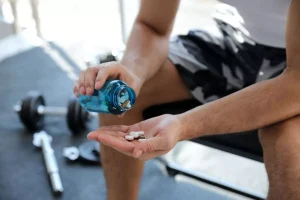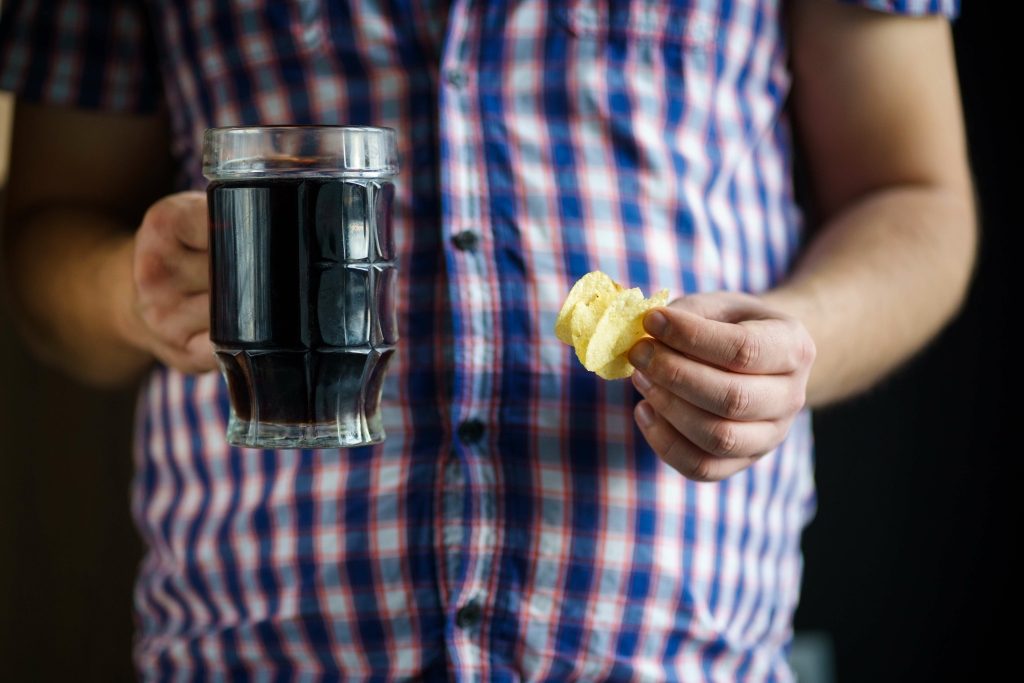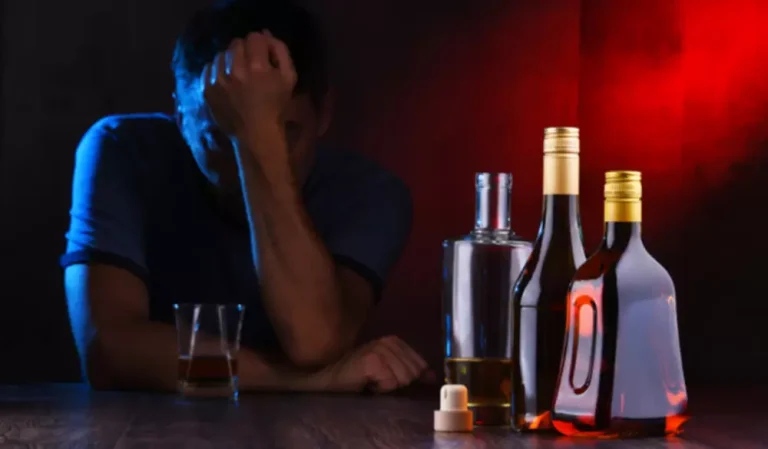FAS can cause a range of symptoms, which can affect many areas of development and can extend in severity. Physical symptoms are distinct facial features such as a smooth philtrum, a thin upper lip (the groove between the nose and upper lip), and small palpebral fissures (eye openings). Other signs include growth deficiencies, low birth weight, and small head circumference 1. Peter Bowers, a famous DJ, has also struggled with learning difficulties and loneliness due to FAS. He was diagnosed with the condition after his mother’s heavy drinking during pregnancy. Despite these challenges, Bowers became one of the most popular DJs in the world and holds no ill will towards his mother.
Importance of Early FASD Diagnosis
In conclusion, Temple Grandin’s journey as an animal behavior scientist and autism advocate is truly remarkable. Her ability to use her personal experiences to make a positive impact both in the scientific community and among individuals with autism showcases resilience, determination, and compassion. Her work continues to inspire others like myself who are navigating life with fetal alcohol syndrome. However, behind his comedic genius lies a poignant connection to the cause of fetal alcohol syndrome (FAS). Carrey’s personal experiences have shaped his strong advocacy for alcohol treatment centers and his vocal support for raising awareness about FAS.
Understanding Watery Sperm: Causes and Solutions
This sudden loss of two vital senses would have been enough to deter many people from pursuing a fulfilling life. In conclusion, Nick Vujicic is more than just a celebrity with fetal alcohol syndrome – he is an icon of resilience who empowers others through his remarkable journey. Through his speeches and books like Life Without Limits, he encourages individuals to embrace their uniqueness instead of allowing it to hold them back. By sharing his own struggles openly, he gives hope to millions around the world that they too can overcome any obstacle placed before them. Jacob Forman, the talented musician known for his work as part of the band Hedley, is a shining example of how individuals with fetal alcohol syndrome can overcome challenges and succeed in their chosen fields. As someone who was born with fetal alcohol syndrome myself, I am inspired by Jacob’s journey and accomplishments.
- Further concerning, the pregnant actress has made public missteps about consuming alcohol during pregnancy – which originally triggered her own condition.
- Despite her challenges, she has excelled in her career as a public speaker and advocate, raising awareness and inspiring others with her story.
- His authenticity shines through all aspects of his work as he strives to make a positive impact on others.
- This breakthrough enabled her to receive an education and even attend Radcliffe College, where she graduated magna cum laude.
- Famous American singer, record producer, bassist, entrepreneur and TV personality, Randy Jackson was born on June 23, 1956.
Top 15 Fado singers of all time
Just as tricky as organizational issues are emotional regulation issues, which can take a behavioral toll that strains relationships with family, peers, and teachers. You rarely hear Fetal Alcohol Syndrome (FAS) pop up in the public dialogue about celebrities, but its impact on health and development requires more visibility. A closer look at Joaquin’s face will reveal a scar that runs from his lip to his nose. It is called a microform cleft lip, a facial and oral malformation that occurs in a child during the first few weeks in its mother’s womb.
Child actor Macaulay Culkin shows possible FAS indicators in his small chin and jaw size. Significant alcoholism in the troubled Culkin family even before his birth likely contributed to Culkin’s lifelong struggles. It is also confirmed that alcoholism was very much a part of the Culkin Family, even before he was born. It also showed in his behavior, which is common among many comedians who use comedy is how they learn to steer their energy on something that feels productive. It is important to recognize that individuals with FAS, like anyone else, have unique talents and abilities that should be celebrated and nurtured.
Celebrities Living with Fetal Alcohol Syndrome (FAS) and FASD
When Morgan was 15, he was diagnosed with Fetal Alcohol Spectrum Disorders (FASD). He wants to help educate others about FASD, both Native Youth and people nationwide, in order to help them. Morgan has spoken at school assemblies, colleges, community colleges, hospitals, churches, and other locations in order to promote FASD awareness. After falling behind and struggling a lot in school, Daniel has been very outspoken as an adult about his diagnosis and the symptoms that come with Fetal Alcohol Syndrome. While he emphasizes the fact that his mother was around as much as possible, she wasn’t very present due to her painkiller addiction.
Past famous people with fasd campaigns for other health issues have shown that celebrity advocacy actually works, and so FAS advocacy is no different. People who are public figures sharing life with a development issue, and are not connected with FAS, can inspire empathy and sympathy. For instance, an actor musician, or influencer may tell their stories to stress the need to stay away from alcohol while pregnant, as well as to support those with FAS. Bernie Sanders is a well-known American politician and activist who served as the U.S. representative for Vermont from 1991 to 2007 and is currently a United States Senator. He was born on September 8th, 1941, in Brooklyn, New York City, and suffers from several illnesses, including gout, hernias, diverticulitis, and a cyst on his vocal cords, in addition to fetal alcohol syndrome (FAS).
Isaacson’s journey is nothing short of inspiring, as he overcame the challenges posed by his fetal alcohol syndrome (FAS) diagnosis to pursue his passion and make a positive impact on others. As an individual with FAS myself, I find great solace and motivation in hearing about people like Rupert who have defied the odds and embraced their unique gifts. Mitte’s presence both on-screen and off has served as a powerful reminder that disability does not define a person’s potential or limit their ability to achieve greatness. Through his work in Hollywood and dedication to advocacy, he has shown us that true strength lies not only in overcoming personal challenges but also in using one’s platform to uplift others. RJ Mitte is proof that disabilities are not limitations but rather opportunities to inspire others through determination, resilience, and unwavering compassion.
- His authentic and heartfelt performance not only brought awareness to individuals living with FAS but also showcased the talent and capabilities of those often overlooked.
- By sharing her own journey openly, she inspires others who may face similar challenges.
- Remember the perfect girl, Reese Witherspoon, from movies like Water for Elephants, This Means War, Walk the Line, etc?
- Despite being born into a religious family, he and his siblings had a difficult upbringing due to their mother’s struggle with alcohol abuse.
His passion for writing began back in college as he wanted to share his views with the world. He enjoys writing about science and nature, health, travel, cities, famous people, and mysterious murders. His writing style is entertaining and enlightening while giving you a fresh perspective on several topics. During an interview with the BBC, DJ Peter Bowers discussed his difficulties with learning and loneliness after being diagnosed with fetal alcohol syndrome.
Jim Carrey
With each dish she created, Christine challenged societal norms and paved the way for more inclusiveness within the realm of cuisine – truly making her an extraordinary celebrity with Fetal Alcohol Syndrome. Her ability to conquer adversity and inspire others with disabilities makes Hellen Keller one of the most extraordinary individuals in history. Her story teaches us valuable lessons about resilience, determination, and how obstacles can be transformed. His authentic and heartfelt performance not only brought awareness to individuals living with FAS but also showcased the talent and capabilities of those often overlooked. By portraying Corky as a loving brother, son, and friend while highlighting his unique abilities and struggles, Burke humanized people with disabilities in a way that had rarely been done before.
Famous Adults with Fetal Alcohol Syndrome
One can visit Mallard Lake Detox Center in Dallas, Texas for a detailed alcohol addiction treatment program. While celebrities may seem all right on the screen, they have many hidden problems, including certain health issues. Craig Beck is a renowned professional alcohol addiction therapist, coach, and mentor.His unique approach has helped over 250,000 people escape the loop of alcoholism. In this article, we will explore what Fetal Alcohol Syndrome is, its symptoms, and highlight some famous people who have thrived despite their diagnosis, inspiring others with their accomplishments.
It may seem hard to believe the beautiful Charlize Theron was born with fetal alcohol syndrome. While there is no solid confirmation that her mother drank while carrying Theron doesn’t make the actress immune to FAS either. The father is involved too, and if the father has enough alcohol in his system and it’s his sperm that enters the woman’s body to create a baby, the odds of the fetus being affected upon conception is possible. This is one of the reasons why physicians highly recommend parents who are looking to make a baby both refrain from alcohol consumption. Studies among these women in the same nation also revealed over three percent of them were confirmed as alcoholics. Among all these women, the risk of the child she’s carrying developing FAS depends greatly on how much alcohol she has consumed while pregnant.
By grounding ourselves in the lived experiences of people who live with the condition—and their particular challenges—we can dispense with baseless speculation and shift the conversation to one of meaningful advocacy. On the positive side, it can offer a well-deserved spotlight on the challenges and triumphs of individuals with FAS, demonstrating how strength, advocacy, and community establish a narrative of strength. A documentary, interview, or public appearance are powerful tools to take the mystery out of the condition and further acceptance. Through her writing and speaking engagements, Fawcett has helped to break down the stigma surrounding FASD and has given a voice to those who often go unheard. She is a powerful advocate for the FAS community and a shining example of how individuals with the condition can overcome adversity and achieve great things.
Social support plays a crucial role in facilitating positive treatment outcomes. Another benefit of sober living homes is that they allow residents to build meaningful relationships with other sober residents. Residents will live alongside other individuals who are also in recovery and committed to lifelong sobriety. Through support groups or just living amongst one another, residents will feel empowered by one another to become the best version of themselves that they can be while prioritizing their sobriety. Alcohol, for example, is recognized as a social substance that one can purchase at nearly any restaurant or store.
A new home for Living Sober
It’s born of 7+ years of sobriety, research, and hard lessons learned. If you’re curious about your current drinking habits, the following quiz can help you see if you’re at high, medium, or low risk of alcohol dependence. What began as a personal accountability tool has turned into a life-changing project to help and connect with people who want to ditch alcohol for good. When I started Soberish, I was so unsure I could actually quit, that I tacked that little -ish on the end. SOBR WATER is a premium 100% Artesian water brand committed to making a positive impact. Sourced from pristine natural springs, each bottle of SOBR WATER offers refreshing, high-quality hydration while supporting a meaningful cause.
Drug & Alcohol Detox
SoberVerse is a place to uplift, heal, and embrace the transformative power of sobriety. Naltrexone can halt the cycle of binge drinking by reducing the drive to drink and supporting the brain. However, he is clear that the long-term solution to alcohol use disorder is working on a recovery program and finding healthy sources of endorphins that can replace the endorphins derived from alcohol. Amy first started drinking alcohol and using drugs when she was 14 years old.
Normandy House Sober Living Blog

The types of services and programs that each sober living home offers will vary depending on the residence and a person’s specific needs. If you or a loved one is transitioning into recovery housing, it’s important to work with your treatment team to make sure the residence offers the appropriate care. The average stay in a sober living home sober living blog is 90 days, but arrangements can be made for a longer stay. In a sober living house environment, professionals are available to help you navigate major changes in your new life. They can also help you determine what length of stay is the right one for you. We’re not here to judge whether you should be living a sober lifestyle or not.
Trinity Sober Homes Blog
Sober living is an option after the intensive treatment provided in inpatient care. It can help with adjusting to living sober outside of rehab and ease the transition back to your normal life. In a sober living program, you’ll live in a supervised home with a group of others who are also on the road to recovery. Sober living houses have structured schedules, meetings, and rules to help promote a positive environment free from temptation and distractions. These bloggers offer their unique perspectives on the struggles and triumphs of living a sober lifestyle and provide valuable resources and inspiration for others who are on the same journey.
Building Community, Creating New Habits, and Finding Support for Your Sobriety

These days, there are blogs on practically any topic you can think of. For anyone on the path to sober living, reading about and connecting with others on the same path is a great way to get additional support and to learn from the experiences of others in recovery. Join Julie Maida, a writer who bravely shares her story of overcoming postpartum depression, anxiety, and agoraphobia. Dive into her blog posts, featured on Scary Mommy, HuffPost, and more, for honest insights and inspiring tales of recovery. Find a supportive community at Sober Mommies, where judgment is left at the door and every stage of recovery is celebrated.
Can Recovering Alcoholics Ever Drink Again?
Get Help With Alcohol Addiction
- I’ve described her words as “heaven on a page.” Her writing offers unique and insightful tips on navigating a life of sobriety.
- A place they will be proud to call their home, enjoy taking care of and being responsible for.
- The cost depends on your insurance policy deductible and your policy co-pay.
- Her blog entries also take on the portrayal of alcoholism in the media and challenge the myths and stereotypes those in recovery often face.
- It started as a personal blog in 2016 and has since grown into a resource hub and a growing community traveling the same path.
Each resident is drug tested at least once per week for a wide array of substances. In addition, residents rooms are searched regularly for substances and Review Review Hope House other paraphernalia. Stepping Stones was the home of Alcoholics Anonymous (A.A.) co-founder Bill Wilson and Al-Anon Family Groups co-founder Lois Wilson. The designation is a high honor; approximately 2,500 historic sites nationwide have received the designation because of their significance and the standards of preservation that they maintain. Accountability is one of the main principles at Stepping Stones Sober Living to assist in an effective transition.
- At Stepping Stones we charge $675 – $750 per month for rent as well as a one-time $25 admin fee.
- Transitional housing is temporary housing for the working homeless population and is set up to transition their residents to permanent housing.
- Stepping Stones of Atlanta Recovery Residences is a sober living house that offers structure, safety, and accountability.
- Regardless of where they come from, how far they have fallen, or how long they have been sober.
- One Alcoholic, one Addict helping another he found strength and hope in numbers.
Being held accountable decreases the likelihood of relapse and helps client become productive members of society. Stepping Stones can assist in providing a safe place to begin your road to recovery. The Stepping Stones house in Bedford Hills was recently designated as historic by the United States Department of the Interior, an initiative celebrated Saturday with the unveiling of the official plaque.
Get Help With Addiction
Each Stepping Stones sober home has a on-site house manager whose responsibility is to ensure the well being of the house occupants. All with at least one year of sobriety, the house managers show a commitment to working a 12-step program in their daily lives, and demonstrate through their actions that they can lead by example. Over the next 3 years, he saw the difference these rules made in his house, and how they helpedthe men in early recovery to stay sober. In 2002, Callan opened a second branch of that houseand ran both residences as sober houses.
Support
Trying very hard to avoid temptation to go drink or do whatever I can find. No matter how self-sufficient you are, history shows that we benefit from spending time with like-minded peers who share our goals and values. At Stepping Stones you’ll find the fellowship you need to lead a long road of recovery.
Accountability
He filled every one of his empty rooms and found support and purpose through service. One Alcoholic, one Addict helping another he found strength and hope in numbers. With the help of the 12 principles of recovery Jesse opened Steppingstones Recovery Homes in 2022 to give a chance to others who were willing to travel the road of recovery, and need some help along the way. Each Review Hope House has a dedicated house manager whose responsibility is to ensure the well being of the house occupants. All with at least one year of sobriety, the house managers show a commitment to working a 12-step program in their daily lives, and demonstrate through their actions that they can lead by example. Typically having gone through one of the sober houses, house managers encourage house members to talk about what is going on with their lives and recovery, and to help house residents to be accountable to one another.
We feel that all an individual should ever need to join a recovery home is the willingness to do so. Regardless of where they come from, how far they have fallen, or how long they have been sober. Everyone recovers at their own pace and needs various levels of support along the way. Our goal is to have multiple levels of homes to help at all stages of recovery to ease the transition from treatment to independently living in the community. Over the next few years, Callan saw his passion for helping others in recovery grow into anetwork of 8 sober houses for men and women, where he continues to work and carry themessage of recovery.
Our founder Jesse was saved by the love, support, and accountability that was created by the sober living home he unintentionally created for himself after finding his own rock bottom. Jesse endured the battles of early sobriety, alone in this now empty house. One day in a 12 step meeting he heard a fellow member who was fighting for their sobriety and had nowhere left to go. Jesse had vacant rooms so he offered his home to this individual under the condition they maintained their sobriety. He didn’t know it at the time, but this would be the first of many people he would offer shelter and safe haven to. As time went on he forged his way through his own battles to maintain sobriety.
Welcome to Stepping Stones of Atlanta Recovery ResidenceSober Living
Using this experience, Callan decided to organize a more structured living situation for himselfand his newly sober friends. The basic rules of the house would center on accountability,sponsorship, meeting schedules, and house rules. Callan also thought it better to include only men, having observed thatthe co-ed living environment is not always ideal for those in early recovery. We Strive to build Steppingstones Recovery Homes to the point that we never have to turn someone away due to a lack of vacancy.
Stepping Stones of Atlanta Recovery Residences is a sober living house that offers structure, safety, and accountability. We are a place of healing, hope and success that will allow you to live life without drugs or alcohol. We operate on the principles found in the 12 Steps of Alcoholics Anonymous. We offer a sober living environment that focuses on unity, service and recovery. Living in a sober living/halfway house is a great experience that leads to long term sobriety.
In the early and middle stages of treatment, clients necessarily are so focused on maintaining abstinence that they have little or no capacity to notice or solve other kinds of problems. Top 5 Advantages of Staying in a Sober Living House In late-stage treatment, however, the focus of group interaction broadens. It attends less to the symptoms of drug and alcohol abuse and more to the psychology of relational interaction.
Reducing Relapse Risk: Building a Supportive Environment
Our recovery programs are based on decades of research to deliver treatment that really works. Engaging in subtle and sympathetic conversations and getting alcoholics to explore the pros and cons of their own behavior, for example, can help to lay the groundwork for the second stage of recovery. Clinical experience has shown that common causes of relapse in this stage are poor self-care and not going to self-help groups. In the second stage of recovery, the main task is to repair the damage caused by addiction [2].
Action Stage
Otherwise, their behavior is at risk of cementing the problem in place. The endpoint is voluntary control over use and reintegration into the roles and responsibilities of society. Shortly after substance use is stopped, people may experience withdrawal, the onset of unpleasant physical and psychological symptoms —from irritability to shakiness to nausea; delirium and seizures in severe cases.
- Stopping drug use is just one part of a long and complex recovery process.
- Recovery is a process of change through which people improve their health and wellness, live self-directed lives, and strive to reach their full potential.
- Upon discharge, a plan for rehabilitation should be in place that considers stroke symptoms, abilities, limitations and other health issues.
- Although many people are tempted to make other major life changes during this stage of recovery, such as changing jobs, experts recommend focusing energy on stopping drinking for at least the first year.
- The leader’s subtle instruction and empathy enables clients to begin to recognize and own their feelings.
Mental Relapse
Addiction recovery is a complex and nuanced process, and recognizing the diversity of individual experiences is crucial in developing effective strategies for sobriety. The concept of harm reduction, along with various modalities, offers a flexible and personalized approach to cater to the unique needs and circumstances of each individual on their journey to recovery. Science indicates that triggers such as people, places, things, moods, and drug exposure play significant roles. Recognizing addiction’s multifaceted nature is crucial, understanding physiological, psychological, and social components.
Innovative projects answer NIDA’s challenge to implement substance use prevention in primary care
It may include clinical treatment, medications, faith-based approaches, peer support, family support, self-care, and other approaches. Recovery is characterized by continual growth and improvement in one’s health and wellness and managing setbacks. https://theohiodigest.com/top-5-advantages-of-staying-in-a-sober-living-house/ Because setbacks are a natural part of life, resilience becomes a key component of recovery. Challenges at this stage of treatment include cravings, social pressure to drink, and high-risk situations that can trigger alcohol consumption.
Contemplation
All possible sources of positive forces in a client’s life should be marshaled to help the client manage life’s challenges instead of turning to substances or other addictive behaviors. In the middle, or action, stage of treatment, clients need the group’s assistance in recognizing that their substance abuse causes many of their problems and blocks them from getting things they want. As clients reluctantly sever their ties with substances, they need help managing their loss and finding healthy substitutes. Often, they need guidance in understanding and managing their emotional lives. Addicts must lie about getting their drug, hiding the drug, denying the consequences, and planning their next relapse.
Probably the most important thing to understand about post-acute withdrawal is its prolonged duration, which can last up to 2 years [1,20]. It is not unusual to have no symptoms for 1 to 2 weeks, only to get hit again [1]. This is when people are at risk of relapse, when they are unprepared for the protracted nature of post-acute withdrawal. Clinical experience has shown that when clients struggle with post-acute withdrawal, they tend to catastrophize their chances of recovery.
- At this point, people are committed to change and are preparing to take action within the next several days or weeks.
- Relapse rates for drug use are similar to rates for other chronic medical illnesses.
- In addition to managing a successful family medical practice, Dr. Hoffman is board certified in addiction medicine by the American Osteopathic Academy of Addiction Medicine (AOAAM).
- But with the right non-judgmental care and support, the maintenance stage can help lessen the blow of any potential relapses.
- They feel they are doing something wrong and that they have let themselves and their families down.
- The maintenance stage of the transtheoretical model of change is concerned with continuing to achieve the progress that began in the action stage.
cared to see clients doing well…
Out of touch with unmedicated feelings, clients already are susceptible to wild emotional fluctuations and are prone to unpredictable responses. Interpersonal relationships are disturbed, and the effects of substances leave the client prone to use “primitive defensive operations such as denial, splitting, projective identification, and grandiosity” (Straussner 1997, p. 68). Second, adjustments in treatment are needed because progress through the stages of recovery is not timebound.
If you know that specific situations or stresses heighten your risk of a seizure, keep these in mind when drinking. Sometimes, it’s better to steer clear of alcohol when you’re not feeling your best. If you have epilepsy and you’re considering having a drink, moderation should be your mantra. Experts often recommend discussing with your doctor what level of alcohol, if any, is safe for you. It’s about finding that balance where you can enjoy yourself without risking health complications.
- They can suggest a treatment plan or refer you to another health professional.
- Yes, alcohol can provoke seizures, particularly when consumed in large quantities or during withdrawal periods.
- It is important to discuss your individual risk for drinking with your health care team.
- It is possible for chronic alcohol consumption to cause seizures in people without a history of seizures.
Effective treatment aims to address both the physical dependence on alcohol and the psychological factors that contribute to alcohol misuse. Successful long-term recovery typically involves a combination of medical support, psychosocial therapies and community-based resources. The authors report that over 90% of alcohol withdrawal seizures occur within 48 hours after the last drink. Alcohol may negatively affect sleep, and sleep disruptions may trigger seizures. For people with epilepsy, alcohol may interact with epilepsy medications and worsen their side effects or make the medications less effective in preventing seizures.
- If you know that specific situations or stresses heighten your risk of a seizure, keep these in mind when drinking.
- This can happen whether or not a person has epilepsy at the time of the withdrawal.
- Medication-assisted treatment (MAT) works best when combined with counseling and peer support, as part of a comprehensive approach to recovery.
- Long-term alcohol use can increase your risk of developing epilepsy, a condition where you are prone to having seizures.
These little guys are like the postal workers of your nervous system, delivering messages all over the place. Stay informed with the latest health tips, expert advice, and inspiring stories. Our blog is dedicated to helping you achieve your wellness goals. Arm yourself with knowledge to seize command over your epilepsy. If you or someone you know has epilepsy, you may find it helpful to learn more. Here are some basic facts about epilepsy and where to get more information.
Epilepsy
After the seizure, you should position them on their side and ensure that their airway is clear while waiting for emergency assistance. Unprovoked seizures that occur more than 48 hours after a person’s last drink may be due to another cause, such as head injury or withdrawal from other drugs. Seizures may occur in around 5% of people can you drink alcohol if you have seizures with alcohol withdrawal syndrome. According to the Epilepsy Foundation, some studies have linked chronic alcohol misuse to the development of epilepsy.
Even someone who ‘binges’ can be at risk when they stop their drinking spree. Binge drinking means consuming a large quantity of alcohol in a short period, which then abruptly stops, making your nervous system more vulnerable. It doesn’t just have a one-way relationship with your brain; it’s more like a two-way street that occasionally turns into a cul-de-sac. Well, the alcohol itself isn’t the direct cause of seizures in most cases, but it’s more about what happens after you drink—or more importantly, when you stop drinking.
Habits for Proper Mental Health
It’s important to always talk with your doctor about whether it’s safe to consume alcohol with your medication. Alcohol and some antiseizure medications can have similar side effects, and taking them together can cause potentially dangerous complications. In another 2020 study, researchers found that people with epilepsy were more 5 times more likely to die from alcohol-related causes than people without epilepsy. In a 2020 study, research found that the risk of SUDEP was twice as high in people with a history of alcohol dependence or substance misuse disorder. If you’re on medication for epilepsy or any condition, check with your doctor about how alcohol might interact with your meds.
Medications such as clonazepam and lorazepam are benzodiazepines that can cause a life threatening interaction when mixed with alcohol. Of course, if you keep bombarding your brain with alcohol, you could face more serious stuff. Long-term use can actually change how your brain’s wired, leading to dependency or other nasty complications like cognitive decline. ‘Only drink when you feel comfortable and in a safe environment. It’s important you understand how your body reacts to alcohol and how your meds might change that, and what your limits are.
How Alcohol Affects the Brain
Over 50% of alcohol withdrawal seizures may relate to additional risk factors, such as preexisting epilepsy, structural brain lesions, or drug use. Heavy drinking, particularly withdrawal from heavy drinking, may trigger seizures in those with epilepsy. Alcohol may also affect anti-seizure medications, which could trigger seizures.
Why Does Alcohol Withdrawal Cause Seizures?
” This can be confusing — especially if you or someone you love has been newly diagnosed with epilepsy and is deciding whether or not to drink. Luckily, current research can help you make wise decisions about your relationship with alcohol. Status epilepticus is a medical emergency that may lead to lasting brain damage or death. Before a seizure, people may experience an aura or feel a change in sensation — such as smell, taste, sound, or vision — due to abnormal activity in the brain. This may be due to alcohol’s effect on the brain, sleep, and anti-seizure medications. Binge drinking isn’t just hard on your liver; it can also lower your seizure threshold.
Understanding the Link Between Alcohol and Epilepsy: Risks and Recommendations
While the reason for this is not fully understood, alcohol does create changes in receptors in your brain that affect your likelihood of having a seizure. While epilepsy can develop on its own in people who do not use alcohol, long-term alcohol use will increase the risk of epilepsy developing in some people. Binge drinking can cause alcohol withdrawal seizures in people, even for individuals who do not have epilepsy. According to a 2017 article, alcohol withdrawal seizures in those without epilepsy may occur 6–48 hours after a person consumes their last alcoholic drink. Most of these medications lower your alcohol tolerance, causing you to become intoxicated or feel the effects of alcohol more quickly or severely. The most direct way alcoholism causes seizures is during withdrawal, which is when someone with alcohol dependence stops drinking.
Paying for Treatment
For some, this disruption in neurotransmitter activity can lower the seizure threshold—basically making it easier for a seizure to occur. Hold on, because, in the next sections, we’ll talk about how this dynamic plays out in different scenarios, including for those with epilepsy. Understanding this can be really crucial if you’re weighing your drinking habits.
For some people, certain situations can trigger (set off) a seizure. Common triggers include lack of sleep, stress, alcohol, and not taking their prescribed anti-seizure medication (ASM). Drinking water in between alcoholic drinks can help reduce the chances of a hangover, but will not prevent seizures from occurring. The patient information leaflet that comes with your ASM should say if alcohol is not recommended. On MyEpilepsyTeam, the social network and online support group for people with epilepsy and their loved ones, members have discussed alcohol, epilepsy, and seizure triggers.
Many people diagnosed with epilepsy have been told that alcohol and epilepsy should never mix because alcohol can trigger seizures. Many doctors and pharmacists recommend total abstinence from drinking, if possible. Below are common treatment approaches that can help individuals navigate detox, manage withdrawal symptoms—including the risk of seizures—and support ongoing recovery. Alcohol use disorder (AUD) encompasses a spectrum of drinking behaviors, from risky or harmful use to alcohol dependence.
Alcohol use can also trigger seizures in people with epilepsy if withdrawal symptoms begin to occur. Epilepsy can cause seizures to occur with more mild levels of alcohol withdrawal than would occur in most people. Some AEDs have side effects that include lowering tolerance for alcohol. This means a person will become intoxicated faster than they used to before they were on the medication. This rapid intoxication can surprise a person and cause them embarrassment, stress, and anxiety — which can, in turn, trigger seizures.
Sober living homes also provide the necessary skills and resources to prepare you for life after treatment. The support and guidance it provides also reduces the likelihood of a relapse. Those searching for the right sober living home should look for facilities with reputable staff, and a safe and productive living environment and culture.
New Life Transitional Living -Wardlow

Residents in sober living homes are expected to maintain their sobriety, participate in group meetings, and contribute to household responsibilities while meeting all expenses. Sober living homes are transitional living spaces for individuals recovering from drug and alcohol addiction. These homes serve as a bridge between an inpatient facility http://www.detiseti.ru/modules/myarticles/article.php?storyid=443 and the real world. Once you leave the structured environment of an inpatient rehab, jumping back into your old life can be challenging. This is where sober living homes come into play, providing a supportive community environment conducive to recovery. To live in most recovery residences, you must be abstaining from drug and alcohol use.
House of Courage
It is also disrespectful to expect the others in the program to shoulder the expense while one or two people have no responsibility. A client not following the rules will create chaos in the home as well as the newcomer not having a positive role model http://infostroitely.ru/1371-chto-luchshe-laminat-ili-linoleum-mnenie-eksperta-i-sovety.html upon entry. It would also be helpful if the house were near your work or school, a grocery store, public transit, a laundromat, and a healthcare provider. By Julia Childs Heyl, MSWJulia Childs Heyl, MSW, is a clinical social worker and writer.
- Also like other sober-living environments, halfway houses generally have systems in place to keep residents sober, and drugs tests are usually administered to monitor for any substance use.
- If you recently completed a treatment program, contact the staff there for referrals to local sober living homes.
- With rules that enforce sobriety and encourage participation in daily tasks and recovery activities, these homes help you build a routine that supports your sobriety journey.
- Level four sober homes are typically a branch of a larger organization with a hierarchy of authority.
How are They Different from Halfway Houses?

Expectations include attending life skills training, community meetings, house meetings, and clinical and peer support services. A paid house manager, administrative staff, and certified peer recovery support staff are at level three. Embarking on the journey to sobriety is a significant step in anyone’s life, especially if http://tomatocart.ru/space-uid-1478.html you’re navigating the complexities of addiction recovery. Sober living plays a pivotal role in this process, offering a structured yet flexible environment where you can forge a path toward a substance-free life. Understanding its importance could be the key to not just achieving sobriety but maintaining it in the long run.
WHAT IS IT LIKE TO LIVE
Khepera House
Beacon House – McMillen

Further, in that study distress tolerance had an indirect effect on alcohol consumption through the pathway of hyperarousal symptoms. These findings are somewhat consistent with the present findings, indicating that individuals with poor coping skills may be led to use alcohol in the face of difficulties with hyperarousal or goal-achievement. Experimental studies have also shown evidence of a temporal relationship between state distractibility, a component of self-control, to alcohol consumption. These findings provide evidence that those individuals who demonstrate lower self-control via distractibility, as may be the case in individuals with PTSD who have difficulty concentrating and completing tasks, may be more likely to engage in risky alcohol consumption.

For elucidation of drinking pattern, we also used the Alcohol Use Disorder Identification Test (AUDIT) [43]. AUDIT is a 10-item questionnaire developed by the World Health Organization to easily screen for excessive drinking and to assist in brief interventions for alcohol-related problems [44]. This instrument has demonstrated reliability and validity in a similar setting to this study [45].
AUD before PTSD
The strong relationship is present in representative surveys of the United States, throughout Europe, and in Australia. The relationship persists in studies of population subgroups at risk, such as veterans of the wars in Vietnam, Iraq, and Afghanistan; firefighters; women; and people with SUD. Although men have a higher prevalence of AUD than women, and women have a higher prevalence of PTSD than men, any individual with either disorder is more likely to have the other. After traumatic experiences, it is common for suffers of trauma to experience helplessness, suicidal thoughts, aggression, self-harm, depression and anxiety.
Additionally, it would be informative to use structured interview measures of all of the constructs in order to gather more descriptive information and determine if these relationships differ in more severe populations. Although our subsample size of 70 examining ptsd alcohol blackout mediation in men was small for many analyses, this was well over the suggested minimum of 25 for bootstrapping mediation (Preacher & Hayes, 2004). There were also a large number of individuals who were excluded for completing the survey too quickly.
Drinking more alcohol after a traumatic event may increase PTSD risk
She has combined both degrees to work in the addictions field for over ten years, both as a case manager and therapist. Throughout her professional experience, she has grown in her passion for serving those with an addiction, as she is able to positively impact some of the most vulnerable in our society. The primary reason that alcohol and PTSD relate to one and another is due to a shared correlation with trauma history. Use of this website and any information contained herein is governed by the Healthgrades User Agreement. © Copyright 2024 Healthgrades Marketplace, LLC, Patent US Nos. 7,752,060 and 8,719,052.

Random prompts included checklists of seven dichotomous dependence syndrome symptoms experienced in the last 30 minutes (e.g., felt alcohol effects less, drank when promised not to, tried unsuccessfully to limit, drank more than intended). In addition, the self-initiated morning assessment included dichotomous items assessing hangover, withdrawal symptoms, inability to stop drinking, and additional items unlikely to be endorsed during the random assessments (e.g., blackout, passing out). The total number of symptoms endorsed across all assessments was the dependence syndrome outcome.
Do People Use Alcohol to Cope with PTSD?
When it comes to alcohol, only one particular state of intoxication — blackouts — can completely knock out your recall, and according to neuroscience, there are certain scenarios in which alcohol can actually improve memory. For this reason, alcohol use problems often must be part of the PTSD treatment. If you have PTSD, plus you have, or have had, a problem with alcohol, try to find a therapist who has experience treating both issues. You may drink because using alcohol distracts you from your problems for a short time. You should know, though, that drinking makes it harder to concentrate, be productive, and enjoy your life. Problems with alcohol are linked to a life that lacks order and feels out of control.

Evidence of noradrenergic dysregulation in both PTSD and in withdrawal from CNS depressants has prompted the use of the α2-adrenoceptor agonist clonidine in both disorders (57, 58). Data from both preclinical and clinical research suggest that this agent, as well as the selective α2-adrenoceptor agonist guanfacine, would be effective in reducing noradrenergic hyperactivity in patients with PTSD and comorbid substance dependence. Guanfacine, given its greater selectivity, may offer a more favorable side effect profile. Given the dearth of established treatments for this patient population, controlled clinical trials to establish the efficacy of these agents are clearly indicated. Clinical and epidemiologic studies confirm that comorbidity of PTSD with substance use disorders is common and that the symptoms of patients with this comorbidity tend to be more severe and more refractory to treatment than those of patients suffering from either disorder alone. Despite the frequency with which patients with both diagnoses present for treatment, no systematic treatment approach of proven efficacy has been developed for this population.
Alcohol Use Disorder and PTSD: An Introduction
Furthermore, the modeling approach accounted for the non-normality present in many of the variables using the negative binomial distribution. Although the study design and analysis had many strengths, the study is not without limitations. Women were slightly overrepresented relative to the proportion of OIF/OEF/OND veterans nationally (11.6%; Department of Veterans Affairs, 2017).
Blackout Review: A Werewolf Thriller About the Addictions of the Mind, Body, and Soul – slantmagazine
Blackout Review: A Werewolf Thriller About the Addictions of the Mind, Body, and Soul.
Posted: Sun, 06 Aug 2023 07:00:00 GMT [source]
We’ve covered detox products to cleanse your system in 24 hours in previous articles, so today let’s focus on things you should (and not) do before taking the test. Generally, a mouth swab test is done when the results are needed as soon as possible. Some countries such as Australia used this type of marijuana drug test to check drivers for DUI, but this resulted in a high percentage of invalid tests and false positives.
Taking diuretics such as coffee and cranberry juice can work too. Another option is to take pills designed for premenstrual water retention. All of these will help flush toxins from your bladder by making you urinate more often. The best you can achieve is inconclusive drug test, but further analysis may show adulterants and cause a failed drug test result.
Saliva test
Diuretics like cranberry are suggested by some users to induce urination, much like drinking a lot of water. There is no exact method to determine how long weed will appear on a drug test. It depends on your personal body composition, age, health, hydration levels, and most importantly, frequency of use and consumption method.
But if you don’t have a prescription, then refrain from taking pills. If drug test shows positive, however, the lab will then re-test it using a process called gas chromatography/mass spectrometry (GC-MS). In this case, it’ll take further 3-5 days for employer to receive the final result. No, gender and sex have no bearing on the outcome or preparation for a drug test.
Taking detox supplements is 100% legal to our knowledge, but you may want to consult your lawyer first. To ensure that your sample isn’t loaded with these metabolites, you want to start your stream and then collect the sample when you’re mid-flow. But you also want to avoid mdma ecstasy molly drug withdrawal symptoms: what you may experience drinking so much that you develop hyponatremia, which can be lethal in some cases1. This technique works mainly for women who, for the most part, pee while bending. Sit on the toilet, with your feet flat on the floor, in a leaned-forward position, and with elbows on knees.
Why you may have problems peeing when necessary
Passing drug tests doesn’t always require a completely clean system, though. Synthetic pee and detox supplements are known ways of achieving this. Ginger, lemon and green tea are other ways people suggest for cleaning your system for drug tests due to their vitamin C content. But there is nothing beyond minor anecdotal data that consumption of either will cleanse your body of toxins that will get you through drug tests.
- You’ll likely just end up with a sick stomach and very yellow pee.
- This process is quick, and most facilities will provide negative result on short notice, usually within 24 hours.
- This is because hair follicle type of drug test can detect most drugs, including THC metabolites, for up to ninety days in your system.
- This is not as common as the others, but it’s still used by some employers, and mostly in child custody cases or monitoring people on a probation period.
- If it’s possible to schedule your urinalysis test in the afternoon, then be sure to do so.
Drinking caffeinated beverages or alcohol is not recommended, as they can make a person more dehydrated. People may need to drink several sips before trying to pee in order to get this technique 10 panel drug test to work. A person may need to try several methods in order to find what works best for them. There are several ways that a person may be able to force themselves to pee on demand.
Things not to do before a drug test
THC metabolites are most concentrated under the tongue and around the gum line, so you don’t want it to go there. It’s slower, so even if you have smoked a lot of pot just before the test, it may not show on the test. The 1.5-inch strand of hair (as wide as a pencil) is collected from an area of your head. Hence, you’d better avoid such products as they are not adequately regulated. At best, they will only contain some mild diuretics and vitamins. The lab should simply confirm your urine is not valid and ask you for another testing.
How to Pass a Urine Test
Depending on your dosage and frequency of use, this could be enough to trigger a positive result. Take the PassYourTest quiz, and it will guide you to the best option based on your frequency of use, weight, type of test, and how long you have to detox. Mouth swabs are gaining popularity because they are quick and less costly to administer and provide fast results. All you have to do is swab the inside of each cheek and mix it with a solution that will indicate the presence of THC. Before heading to the bathroom, a person may wish to do a few laps of the house or office to stimulate urination. Simple exercises such as walking or doing jumping jacks can help a person urinate.
This method of testing is the easiest to overcome by getting your THC levels below this threshold. The most common problem people face with a urine test is the time it takes to lower THC levels in your body. People should seek medical attention if they experience trouble urinating several times a day. Not being able to pee can be a sign of underlying conditions that require treatment, such as urinary tract infections or prostate problems. As we’ve seen earlier, detox drinks are ideal for almost anyone who needs to pass a drug test on short notice.
It’s possible to purchase a type of detox kit that aims to clean your body of THC in 24 hours too. In reality, it’s usually a detox drink fortified with herbal pre-cleansing capsules, which are supposed to be taken at least 48 hours before drug test. When it comes to urine tests, water dilution tends to help people pass a drug test, at least according to the Internet.
Although men generally require a longer time to detox than women, that is due to the greater average weight amongst the male population. Because there is no evidence that niacin is a reliable way to pass a drug test, it’s best to avoid this method. This substance dependence kit tests for the presence of various levels of THC in your urine. It’s the most sensitive instant home THC test kit on the market, with 99% accuracy in minutes. It tests for 15, 50, 100, 200, and 300 ng/mL levels so you can track your detox progress.
This only emphasizes the importance of knowing how to pass a drug test for weed. Basically, every employer has the right to secure a work environment that is clear of drugs and alcohol (according to statistics, alcohol is a drug, too). We’re here to guide you through various techniques you can use to pass the drug test without being caught. Fake pee being illegal in your state is one good reason not to use it.
Be sure to pack clothes that are easy to wash and do not require special care, such as dry cleaning. Most rehabs have a very strict dress code, so be aware of any restrictions while you’re packing. If you’re unsure about how to pack for the weather, pack layering options, like T-shirts, sweaters, cardigans and jackets. Keep in mind, space in your room may be limited, so try not to overpack. Enter your phone number below to receive a free and confidential call from a treatment provider.
Take Our Substance Abuse Self-Assessment

Neither this site nor anyone who answers the call receives a commission or fee dependent upon which treatment provider a visitor may ultimately choose. Calls to numbers on a specific treatment center listing will how to get someone into rehab be routed to that treatment center. Calls to any general helpline will be recieved by Legacy Healing Center, a paid advertiser. Calls from your area will be answered by Legacy Healing Center, a paid advertiser.
Does Medicare cover substance abuse rehab?
Medicare has a multi-step process for Medicare Advantage enrollees to appeal payment denials. If they lose after first appealing to the health insurance company, they then go to an independent contractor called a quality improvement organization. If appeals fail there twice, patients can next appeal to an administrative law judge. Medicare Advantage plans are required to provide the same benefits as Original Medicare and may offer benefits not covered by Original Medicare. There is no limit as to how long Medicare Part B will cover these outpatient rehab services, as long as the rehab is considered medically necessary by your primary health care provider. Medicare Part A (inpatient hospital insurance) and Part B (medical insurance) may both cover certain rehabilitation services in different ways.
Family Counseling
The day usually starts early in the morning, with a fixed wake-up time around 7 a.m. Nurses may give medications first thing in the morning, and clients may have some alone time to prepare for the day. Some programs even offer morning classes of meditation or yoga, which helps patients start their day in a calm manner. During the last three months of treatment, residents move to transitional housing and work during the day, gathering for communal meals and fellowship.
Medications can be used during the withdrawal process in medical detox, and they can also be a part of an ongoing medication-assisted treatment program. Medication-assisted treatment involves using medications in tandem with counseling during the recovery process. Every facility will have its own unique rules and guidelines, but some rehab rules are common to many inpatient and outpatient facilities. When packing for rehab, it’s important to know what items your treatment center prohibits and what you’re allowed to bring. You must meet certain important conditions in order for Medicare to cover your inpatient rehab.
UnitedHealth’s rehab restrictions, Texas medical school drama, and health care’s biggest profits – STAT
UnitedHealth’s rehab restrictions, Texas medical school drama, and health care’s biggest profits.
Posted: Tue, 02 Jan 2024 08:00:00 GMT [source]
Lee Commissioners award over $41.6M for rehabilitation of affordable housing units
Partial hospitalization is suitable for patients who are not a danger to themselves but still require intensive treatment. In these programs, people spend more time in treatment than those in traditional outpatient programs, but they may be able to live at home and get treatment through the Nobu teletherapy app. In a medical detox treatment program, staff can provide medications to ease the discomfort of withdrawal as drugs and alcohol are leaving the body. For example, experts report that people who are withdrawing from heroin may take lofexidine to alleviate withdrawal symptoms. It’s important to keep in mind that medication is only used during withdrawal when clinically cleared by a medical professional. A medical detox program is the first step for someone who is beginning treatment for a severe addiction to substances like heroin, alcohol or benzodiazepines.
These may be designed for stress management, anger management, or grief counseling, with coping strategies to help patients better resolve their problems without resorting to drugs or alcohol. IRFs are free standing rehabilitation hospitals and rehabilitation units in acute care hospitals. They provide an intensive rehabilitation program and patients who are admitted must be able to tolerate three hours of intense rehabilitation services per day. CMS collects patient assessment data only on Medicare Part A fee-for service patients. The law requires a significant amount of interagency coordination and collaboration between the Department of Justice (DOJ), the Department of the Interior (DOI), and the Department of Health and Human Services (HHS).
- Your costs may also be different if you were transferred to an inpatient rehab facility either directly from an acute care hospital or within 60 days of being discharged from a hospital.
- After the initial assessment, you’ll go through the detoxification process.
- The specifics about what Medicare pays and for how long depend on the type of care needed and where it’s provided.
- The 3-day rule does not apply to these procedures, and Medicare will cover your inpatient rehabilitation after the surgery.
Or a facility with equine therapy such as Oxford Treatment Center might recommend that you bring jeans and boots for horseback riding. Though you don’t always have advance notice of a sudden illness or injury, it’s always a good idea to talk with your healthcare team about Medicare coverage before a procedure or inpatient stay. Rehabilitation may occur in a special section of the hospital, a skilled nursing facility, or a separate rehabilitation facility. The vote made on Tuesday will be used for six multi-family housing rehabilitation projects covering 836 affordable housing units.


Eating a balanced diet, particularly with “super foods” that support mental health, is highly beneficial for easing stress and improving mood. Regular exercise, a consistent sleep schedule and reduced caffeine and sugar intake can also help reduce anxiety. Whether the attack is a result of a substance use disorder or a pre-existing mental health disorder, it is always a legitimate medical condition.

Alcohol intoxication may result in stressful mistakes

Drinking heavy amounts of alcohol regularly can also cause your body to become dependent upon the chemical reaction that occurs in your brain. When you stop drinking, the withdrawal symptoms are a result of your body continuing to crave the stimulation that alcohol once generated. While the initial withdrawal symptoms can be uncomfortable, it helps to know that they will dissipate over time Quitting alcohol opens up new opportunities for you to live a healthier lifestyle that makes it easier to achieve your goals. Trying to quit alcohol on your own can sometimes lead to developing uncomfortable withdrawal symptoms that impact your physical and mental health.
Anxiety and Alcohol: Does Drinking Worsen Symptoms?
This can lead to a sense that certain places or situations—particularly situations where escape might not be possible—are not safe. Agoraphobia can cause significant disruption to a person’s life, causing them to go out of their way to avoid situations, such as adding hours to a commute to avoid taking alcohol and panic attacks the train or only ordering take-out to avoid having to enter a grocery store. In one tragic case seen by our clinic, a woman suffering from agoraphobia had not left her apartment for 20 years and had spent the past 10 years confined to one small area of her apartment, away from the view of the outside.
The Common-Factor Model
About 20 percent of Americans with an anxiety or mood disorder such as depression have an alcohol or other substance use disorder, and about 20 percent of those with an alcohol or substance use disorder also have an anxiety or mood disorder. When you suffer from panic attacks and anxiety, it implies that your natural ability to cope with stress is suffering. You need to rebuild that coping ability in order to cure your panic attacks. During a panic attack, your brain and your body are completely overwhelmed. You are likely to feel a sense of impending doom alongside common physiological symptoms. If you have symptoms of anxiety and use alcohol to cope in social situations, you are not alone.

Suddenly decreasing or stopping your alcohol intake can cause your body to go into withdrawal, potentially leading to a number of dangerous symptoms including hallucinations, dehydration and seizures. Few people may realize it, but you can actually be allergic or intolerant to alcohol. Anywhere from 7% to 10% of the general population has such an allergy, though it affects about 35% of those with Asian backgrounds. Signs include skin flushes and a feeling of being either wound up or very sleepy. But if drinking never ends, and the alcohol use becomes chronic, you might begin to see how anxiety and alcohol misuse can feed into each other. In fact, drinking can change the chemistry of the brain in a way that actually makes anxiety worse.

Treatment for Panic Disorder
- If you notice that you feel emotional symptoms after quitting alcohol, then it is also important to address how you feel.
- If, after reading this article, you realize you may need treatment for alcohol abuse or anxiety disorder, seek professional help as soon as possible.
- Instead of alcohol, consider talking to a mental health professional about effective anxiety management options, which may include psychotherapy and medication.
- Antidepressants may be taken every day to help treat anxiety, while benzodiazepines are generally used for temporary relief from uncontrollable feelings of anxiety.
Alcohol can also make anxiety worse because it affects the levels of other mood-influencing chemicals like serotonin. Research notes that changes in chemical levels such as serotonin can cause anxiety disorders and depression. While dopamine increases immediately after drinking alcohol and temporarily makes you feel good, when the inebriation has faded, whatever symptoms that were being avoided rebound. Alcohol may be a temporary, unhealthy way to relieve anxiety and forget about your underlying stressors; however, using alcohol does not erase these underlying triggers.
Overcoming Hemophobia: Practical Tips to Overcome Fear of Blood
These feelings can naturally increase overall feelings of anxiety in daily life. If you find it difficult to reduce or completely stop your alcohol consumption even after experiencing alcohol-induced panic attacks, you may be dealing with physical or psychological addiction and should consider seeking treatment. According to the Anxiety and Depression Association of America (ADAA), it isn’t unusual for people with social anxiety disorder and other anxiety disorders to use alcohol to try to calm anxiousness and ease related symptoms.
When dealing with stressful days or nervous situations, you may be tempted to have a glass of wine or a beer to calm your nerves. However, drinking alcohol, especially heavily and over a long period of time, can actually increase your anxiety. Drinking alcohol on a regular basis can result in your body building up a tolerance to this substance over time. This means that you will need to drink larger amounts of alcohol on a more https://ecosoberhouse.com/ frequent basis in order to experience the same effects, increasing the risk of developing a physical or psychological addiction. Alcohol acts as a sedative, often lowering the feelings of anxiety or panic that you may be experiencing. If you automatically reach for alcohol as soon as you notice the impending symptoms of a panic attack, you may believe that this substance calms you down and prevents you from spiralling.
- If you’re regularly experiencing some or all the symptoms listed above, it’s important to seek professional help immediately.
- Working with a therapist generally involves regular talk therapy sessions where you discuss your feelings, problem-solving strategies, and coping mechanisms to help with your condition.
- If you’re someone who is prone to panic attacks when there is no obvious external trigger, dealing with the stress of mistakes can make having one more likely.
- People suffering from this disorder often use alcohol or drugs to try to ease their anxiety, but substance abuse can exacerbate PTSD symptoms.
- At the very least, I find comfort in remembering that my shaky-emotional-ground feeling, no matter how intense, will dissipate soon enough.
Can you have alcohol anxiety without having an anxiety disorder?
If you or someone you love is experiencing alcohol related anxiety, there are ways to cope. Unlike food, which can take hours to digest, the body absorbs alcohol quickly — long before most other nutrients. It can be hard to decide if you think someone is drunk enough to need medical help. You may worry about what will happen to you or a friend or family member, especially if underage.

